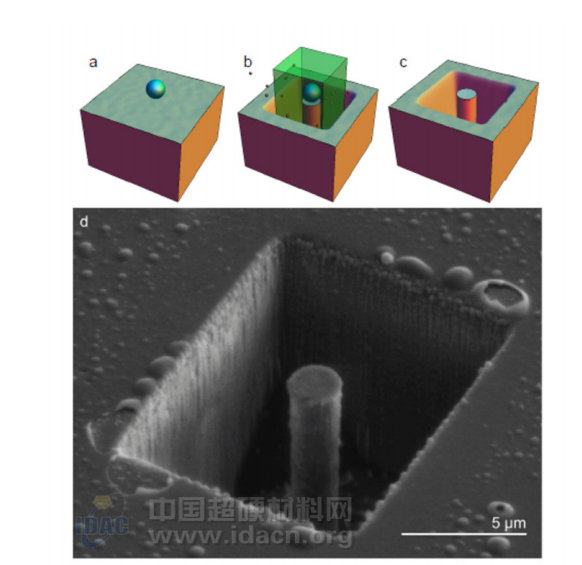Pneumatic Toilet Tank is a high-tech toilet equipment that uses pneumatic technology to control flushing. Compared with traditional mechanical hidden water tanks, it has higher flexibility and reliability. Pneumatic Toilet Tank, Pneumatic Cistern Flush, Sensor Toilet Tank, Automatic Flushing Cistern Guangdong Fabia Intelligent Technology Co., Ltd , https://www.smartfabia.com
The production of computer CPUs has always used photocopying technology to process silicon substrates. Today, the University of Technology, Sydney, Australia uses diamonds instead of silicon substrates, which not only improves the quality of CPU materials, but also Traditional photocopying technology has taken it to a new level.
Lead researcher Professor Aiden Martin said that photocopying technology is an enabling technology that etches patterns on the surface of silicon, silicon dioxide and other components and other microelectronic devices. Etching the circuit diagram on nanodiamonds without damaging the properties of the diamond itself opens up a whole new path for the next generation of new photonic devices.
Simply replacing the silicon substrate with nanodiamonds, the traditional photocopying technique is useless for diamond etching; because diamonds have very good chemical stability and do not respond to photolithographic etching. Scientists have attempted to etch the circuit on the diamond surface using high-energy laser ablation and particle bombardment techniques, but counterproductively, the surface structure of the diamond has been destroyed.
After some exploration, the research team developed a low-energy etching technique that not only etches the circuit surface of the diamond surface, but also damages its surface structure. This new technology is relatively simple. It utilizes the characteristics of water molecules that are easily attached to the surface of the material. A low-energy electron is used to decompose water molecules into hydrogen radicals and oxygen radicals, and then use the activity of oxygen radicals to carbonize the diamond surface. The molecule undergoes decomposition and the product is carbon monoxide, thus achieving the purpose of etching the diamond surface.
At the same time, the experiment also solved the problem that water droplets could not directly attach to the diamond surface, and the free movement of these low-energy electrons was restrained by a preset shape.
Aiden Martin first placed a layer of silica mask on the diamond surface to block the contact of low-energy electrons with the diamond, then placed the diamond in a water-filled environment, then turned on the low-energy electron beam scan, masking it through the silicon dioxide. The hollow circuit diagram of the mold completes the photocopy of the diamond surface by the electron beam. 
Aiden Martin is proud to comment on their research, saying that this electron-induced chemical etching technology is a technological change in diamond nanofabrication. The first benefit in the future will be in the field of quantum computers. The manufacturing process of CPU and the transformation of materials will make the future Computer performance is greatly improved. (Compiled from 'Diamond Patterning Technique Could Transform Photonics')
The pneumatic toilet cistern is mainly composed of a water tank, an air gauge, a cylinder, a water valve and buttons. When the button is pressed, the air gauge will automatically release the compressed air into the cylinder, push the water valve to open and release the water into the toilet basin. When the air in the barometer is completely released, the water valve will automatically close, stopping the inflow of water.
The advantages of the pneumatic toilet tanks include: the amount of flushing water can be adjusted freely, the flushing effect is better, the service life is long, it is easy to clean, and it is more water-saving. It can control the amount of flushing water by adjusting the air gauge, so as to adapt to different toilet basins and flushing requirements. In addition, the pneumatic hidden water tank does not require any buttons or handles to be touched by hand, which also makes it more hygienic.
Nano-diamond photocopying technology opens up new fields of computer
Abstract The central processing unit of a computer, namely CPU (Central Processing Unit), uses a technique called photolithography in its production process: silicon oxidation after heat treatment...
The computer's central processing unit, the CPU (Central Processing Unit), uses a technique called photolithography in its production process: applying a photoresist on the heat-treated silicon oxide layer. The ultraviolet ray is irradiated to the silicon substrate by a template printed with a complicated circuit structure pattern of the CPU, and the photoresist is dissolved by the ultraviolet ray. Thus, there is a CPU circuit on the silicon substrate.